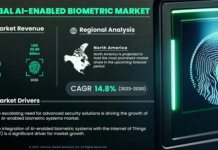
Driven by increased adoption of smart sensors integrated into connected devices, the Internet of Things market segment is projected to reach USD $1.5 trillion by 2027. These devices are being made and sold by some of the largest technology companies in the world, into the manufacturing, retail, government, healthcare, consumer, transportation, IT and telecom markets. While IoT devices have the opportunity to revolutionize the way people work, live and play, insufficient implementation of embedded security has the potential to derail these benefits.
With the number of IoT devices is forecast to triple to more than 75 billion units over the next few years, there will be a corresponding increase in the number of issues and vulnerabilities that cybercriminals can exploit. According to Forrester Consulting, The state of enterprise IoT security in North America is unmanaged and unsecured:
• 84 percent of security professionals believe IoT devices are more vulnerable than computers
• Two-thirds of enterprises have already experienced an IoT security incident
• Only 16 percent of enterprise security managers say they have adequate visibility of IoT devices in their environments
“Security is a critical element of IoT deployment, yet it is often neglected in the development process,” said Phil Attfield, CEO, Sequitur Labs. “IoT manufacturers need to come up with security practices to protect both proprietary edge device IP and customer data/privacy. Lack of IoT device security exposes customers to the danger of a breach that can lead to IP theft, damage to a company’s brand, and loss of customer trust. With trillions of dollars on the line, there is an immediate need to secure devices across their entire lifecycle to help overcome complex cybersecurity challenges.”
Device management represents just over a third of the IoT market, along with network management and cloud platforms. However, not enough of that device management is being dedicated to deploying the best security practices.
“If manufacturers do not implement IoT device security practices, the government will likely step in to regulate this area as part of their consumer protection policies,” said Attfield. “One way for manufacturers to get ahead of the curve and implement security at the device level is through technologies like the EmSPARK Security Suite.”
Sequitur Labs’ EmSPARK Security Suite was designed to address solutions in industries where embedded security is paramount, in particular, protection of AI models at the edge. Supporting security functions for encryption, storage, data transmission and key/certificate management are delivered by EmSPARK and housed in a microprocessor’s secure memory partition. IoT hardware manufacturers use EmSPARK to easily implement device-level security by addressing technical, IP, supply chain and business process challenges. Developers can easily build applications that use secure resources without having to become experts in cryptography and complex chip-level security technologies.
For additional information about how to purchase and deploy the EmSPARK Security Suite for comprehensive device security, interested parties can visit https://www.sequiturlabs.com/contact-us/.



















